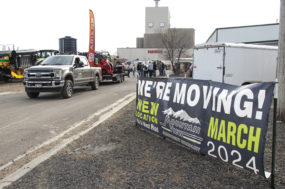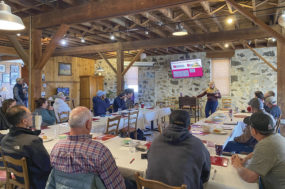With each new decade, Idaho and every other state go about redrawing their congressional and legislative boundaries in a process known as redistricting. This is all done to ensure roughly equal representation in order to preserve the constitutional principle of “one person, one vote.” Just as everything else over the past two years, this process too was disrupted and delayed, creating a sense of urgency in anticipation of the upcoming primary elections in May.
In Idaho, we rely upon an independent, six-member, bipartisan commission to redraw our districts. A member is appointed by both the majority and minority leaders in the Idaho House and Senate, along with the party chairs of the two major political parties. With each new census, a new commission is established and tasked with drawing new districts within 90 days. The commission must take into consideration changes in population, as well as the makeup of the communities in our state. The impacts of redistricting on rural Idaho are manifest with uneven growth and geographic considerations across the state as we look ahead to another decade of statewide legislative representation.
In 2020, Idaho ranked second in the nation in population growth at 17.3%, right behind neighboring Utah. The biggest challenge facing the redistricting commission, and our state, was the imbalance in where the growth occurred. Idaho saw explosive growth in many of the bedroom communities just outside of our already populated cities, which also saw continued growth. For example, the city of Star grew by 91.9%, while Rexburg grew by 54.6%. Once again, the bulk of this growth centered around the Treasure Valley, where Meridian grew by 42,543 people. Since 2000, Meridian has transformed from an agricultural-based dairy community to become Idaho’s second-largest city with 210.8% growth.
Growth is not the only challenge; many of Idaho’s rural communities shrank over the past 10 years. For example, Clark County, already Idaho’s smallest county prior to the census, saw a decline of 19.6%. While the total number of people moving away from some of our rural communities was not huge, the combined effect, alongside growth elsewhere, had significant implications for representation in our legislative districts.
In 2011, the ideal legislative district to achieve population equity would have 44,788 people. That jumped to 52,546 this go-around. This means that districts with neutral growth still needed to become geographically larger in order to pick up more people. Again, this phenomenon affected many of our rural and agricultural communities.
With Idaho’s unique shape, and a legal priority to keep counties whole, much of the redistricting commission’s work was assembling counties, like puzzle pieces, to build districts with sufficient population. During the process, the commission held public hearings across the entire state, welcoming ideas on how best to assemble the map. Often the commission was urged to keep agricultural communities together rather than combining them with rapidly growing suburbs.
According to Commission Co-Chair, former state Sen. Bart Davis, this proved to be much harder than originally thought. For example, Blaine County needed to be joined with neighboring areas in order to have a sufficient population, regardless of whether the neighboring counties felt they had much in common with Blaine. This resulted in the dairy and ranching communities in Jerome and Camas being paired with the resort communities surrounding Sun Valley.
Similarly, the definition of an agricultural community is being tested with Kuna. Based upon testimony, long-time residents still see Kuna as a dairy community, despite its 57.9% growth over the past 10 years and daily commutes into Boise. Residents in the neighboring areas of Owyhee County aren’t confident that the growth in Kuna still reflects its roots. The new legislative district 23 will test this as it combines half of Kuna with Owyhee and rural Canyon County.
Regardless of these new combinations, it still appears on its face that the combined efforts of our agricultural representation at the statehouse will continue to carry great weight. The common appreciation that our rural farmers, ranchers, dairy producers and timber folks have for one another outweighs partisan debates and divides seen in more populated urban areas, like Boise, where representatives do not share the same understanding for one another.
Of course, participation during the May 17 primary election will have the most profound impact on what representation in these new legislative districts looks like. Each time redistricting occurs, new districts and legislative seats are formed, and current legislators find themselves paired in new districts with one another. The highest turnover in the legislature occurs following the redrawing of these maps, and this year will likely be no different. The communities that turn out the most in the upcoming election will establish the direction the districts take over the next 10 years.
While ideas were discussed during the redistricting process to significantly alter congressional lines, those lines largely remain unchanged. The line continues to divide Idaho east and west, cutting through the center of Ada County. The races we see there will largely remain the same.
At this phase, the maps adopted by the commission appear to be final. Legal challenges have already been considered by the Idaho Supreme Court, and the maps have survived the scrutiny. However, these challenges have added to the already constrained timeline and early delays experienced during this process. While there were some doubts as to whether the primary election could occur on time, everything now appears to be on track. Candidates seeking office for these new districts will begin filing between Feb. 28 and March 11.
One of the great successes of the redistricting process this year was access to the information and the added opportunities for public participation using new technology. To see the adopted maps or to learn more about the process and legal requirements, see the links provided by the redistricting commission below.
Redistricting information
Adopted congressional map (C03)
Redistricting commission website





